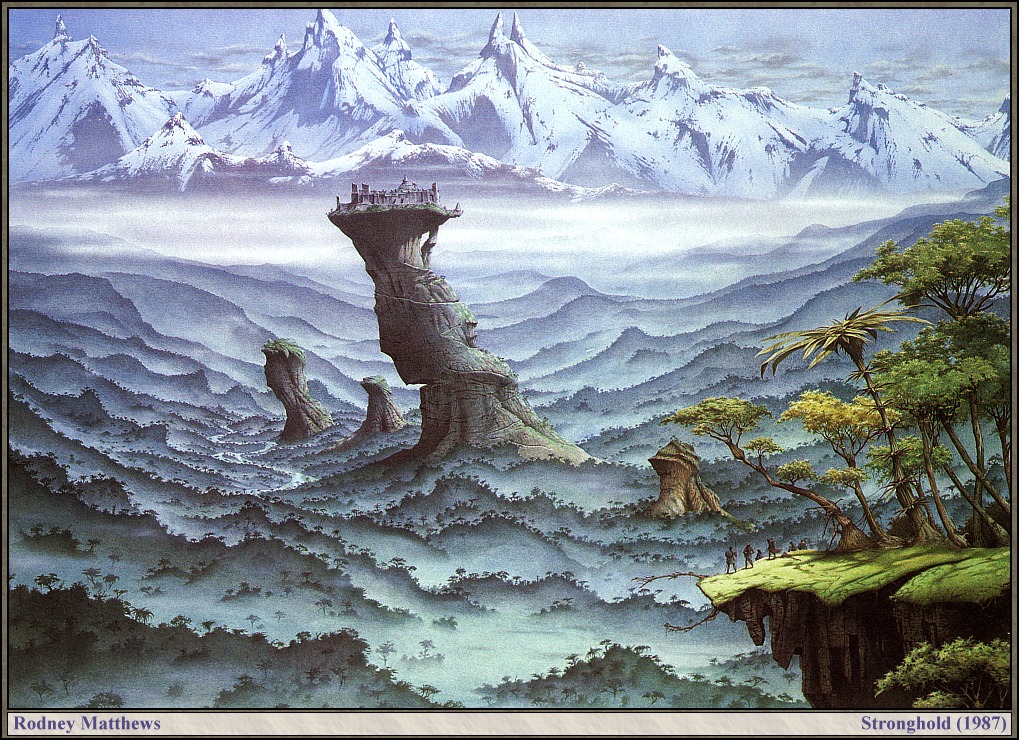The world of role play gaming is a vast and exciting realm, filled with countless opportunities for adventure and entertainment. For newcomers, it can be both thrilling and overwhelming to consider the diverse array of gaming experiences available. Among these experiences, two standout options have captured the hearts and minds of players worldwide: tabletop role-playing games (TTRPGs) and video games. Each of these gaming mediums brings its distinct flavor to the table, promising immersive experiences that are both exhilarating and steeped in storytelling.
For those who are just setting foot into this expansive world, the initial question that often arises is, “Which path should I choose?” It’s a question that carries weight, as the choice between tabletop role-playing and video gaming can significantly shape the kind of adventures you embark upon and the stories you create or experience. In this beginner’s guide, we aim to shed light on the core differences between these two captivating forms of gaming. By doing so, I hope to equip you with the knowledge needed to make an informed decision—one that aligns with your interests and preferences.
Before we dive into the specifics, let’s take a moment to appreciate the essence of both TTRPGs and video games.
Tabletop Role-Playing Games (TTRPGs): A Journey of Imagination
Imagine gathering around a table with friends, or even connecting virtually with fellow adventurers from around the world. In this shared space, you collectively embark on a journey into realms unknown, guided by your imagination and the deft hand of a Game Master (GM). This is the essence of tabletop role-playing games, or TTRPGs.
In TTRPGs, you step into the shoes of a character of your own creation—a hero, a rogue, a wizard, or anything your heart desires. You engage in a collaborative narrative where your choices shape the world around you. There are no pre-rendered graphics or scripted events; the stage is set, and you are the author of your own adventure. The rules and mechanics are like the threads of a grand tapestry, guiding your interactions and resolving challenges as you traverse a landscape limited only by your collective imagination.
When it comes to interactive gaming platforms and the boundless realm of opportunities they offer, pen and paper role-playing games (RPGs) stand as a shining example. Why is that? Well, the answer is rather simple, yet profoundly impactful: it’s because you are an essential component of the experience.
In a world dominated by digital consoles, high-definition graphics, and advanced artificial intelligence, you might wonder what makes pen and paper RPGs so unique and immersive. The secret lies in the unmatched power of human imagination and creativity.
Unleashing the Imagination
Pen and paper RPGs, unlike their digital counterparts, don’t rely on pre-programmed algorithms or scripted events to guide the gameplay. Instead, they provide a framework, a canvas upon which the players and the Game Master (GM) paint their own unique stories. Your imagination becomes the driving force, allowing you to envision and shape the game world in ways that no computer algorithm can replicate.
You Are the Hero
In the world of pen and paper RPGs, you are the hero of your story. You create a character, define their personality, quirks, and background, and then step into their shoes. Your decisions and actions directly influence the unfolding narrative. Whether you choose to negotiate with a group of goblins instead of battling them or explore a hidden cavern instead of following the main quest, every choice you make carries consequences, just as it would in real life.
Collaborative Storytelling
Pen and paper RPGs are inherently social games. They bring together a group of individuals, each with their own character and unique perspective, to engage in collaborative storytelling. The interactions between characters and the collective decision-making lead to unexpected plot twists, memorable moments, and a rich tapestry of narrative that is impossible to predict or replicate in a digital game.
Infinite Versatility
One of the remarkable aspects of pen and paper RPGs is their versatility. Unlike video games that are bound by the limitations of their code and design, RPGs allow for limitless customization. You can create any setting you desire, from epic high-fantasy realms with magic and dragons to gritty post-apocalyptic wastelands or even futuristic spacefaring adventures. The only limits are the boundaries of your collective imagination.
The Game Master’s Role
At the heart of every pen and paper RPG session is the Game Master, often referred to as the Dungeon Master (DM) in games like Dungeons & Dragons. The GM is a crucial element of the experience. They serve as the narrator, the world-builder, and the arbiter of rules. Their role is to provide the framework and challenges, but they also adapt to the players’ choices, injecting life and spontaneity into the narrative.
In a sense, the GM embodies the essence of what makes pen and paper RPGs so special. They bridge the gap between the game’s mechanics and the players’ creativity, ensuring that the world responds dynamically to the choices and actions of the players.
In sum, there is no gaming platform quite like pen and paper RPGs because they place you at the center of the experience. Your imagination, creativity, and choices are not just important; they are the driving force behind every adventure. In a world where technology continues to advance, the timeless appeal of pen and paper RPGs remains firmly rooted in the limitless potential of the human imagination.
Video Games: A Digital Odyssey
On the other side of the gaming spectrum, we have video games—an evolution of entertainment that has taken full advantage of digital technology. These interactive experiences whisk you away to meticulously crafted virtual worlds, complete with stunning graphics, dynamic gameplay, and engaging stories.
In a video game, you are the protagonist of a meticulously designed narrative. Whether you’re exploring the vast, open landscapes of a role-playing game, solving puzzles in a cerebral adventure, or competing in high-octane multiplayer battles, the experience is guided by a digital hand. You navigate through richly detailed environments, encountering characters, quests, and challenges that have been artfully created by game developers.
Now that we’ve provided a glimpse into the core essence of these two gaming mediums, let’s delve deeper into the factors that set them apart. In the sections to come, we will explore key differences in terms of medium of interaction, the role of imagination versus graphics, freedom of choice, social interaction, and narrative control. These insights should help illuminate your path as you embark on your gaming journey.
Each of these gaming mediums offers a unique experience, and understanding these distinctions will help you make an informed decision.
Medium of Interaction
The first notable difference lies in the medium of interaction:
TTRPGs: TTRPGs are primarily analog in nature. They involve physical components such as rulebooks, character sheets, dice, and often miniatures. These tangible elements add a tactile dimension to the gaming experience, as players flip through pages, roll dice, and move figurines on a tabletop.
Video Games: Video games, as their name suggests, are digital experiences. They are typically played on various platforms, including gaming consoles, personal computers, and mobile devices. The interaction occurs through on-screen interfaces, controllers, or touchscreens, making use of digital technology to immerse players in virtual worlds.
Imagination vs. Graphics
Another fundamental difference centers around the role of imagination versus graphics:
TTRPGs: Imagination takes center stage in TTRPGs. Players rely on their creative minds to visualize the game world based on descriptions provided by the Game Master (GM). The absence of pre-rendered graphics allows for a deeply personalized experience, as each player envisions the characters, settings, and scenarios uniquely.
Video Games: In contrast, video games leverage the power of graphics and animations to depict the game world. These visuals are meticulously crafted by game developers, aiming to provide stunning, immersive environments. Players explore these visually rich worlds, immersing themselves in the carefully designed landscapes and characters.
Freedom of Choice
The level of freedom of choice is another factor that distinguishes these gaming mediums:
TTRPGs: TTRPGs excel in offering unparalleled freedom. Players are not bound by rigid scripts or predetermined paths. Instead, they actively contribute to the narrative by making choices for their characters. This freedom extends to character creation, personal stories, and the potential to shape the world in unexpected ways.
Video Games: While some video games incorporate choice-based gameplay, the overall experience is often more structured and linear. Many video games have predefined objectives and storylines, with the player’s role being to navigate through these narratives.
Social Interaction
Social interaction in gaming is a vital aspect to consider:
TTRPGs: TTRPGs thrive on face-to-face or online social interaction. Players gather around a table or connect through virtual tabletop platforms, engaging in conversation, laughter, and collaboration. These games encourage players to work together, solve problems, and share their creative ideas. Nothing beats face-to-face but in the era of Zoom and other online meeting places, this can be a close second. The hours will tick away if you manage to get a group.
Video Games: While multiplayer video games also facilitate social interaction, they may involve less direct communication and collaboration. Players often interact through in-game chat or voice communication, and teamwork may revolve around achieving in-game objectives rather than collaborative storytelling. And often the story, if there is one, is linear.
Narrative Control
Lastly, the degree of narrative control is a significant contrast:
TTRPGs: In TTRPGs, players have significant control over the narrative. The GM adapts to their choices, creating unique stories tailored to the group’s decisions. The outcome of the game is shaped collectively, resulting in dynamic and unpredictable adventures. The adventures also can never end if you choose them not to.
Video Games: Video game narratives are typically predetermined and follow a set storyline. While some games incorporate branching paths or choices, the overarching narrative structure remains predefined, limiting the player’s influence on the direction of the story.
Making Your Choice
With these key differences in mind, you can now make an informed decision based on your preferences and what you seek in a gaming experience. Here are some guiding questions to help you choose:
Do you value limitless creativity and personalization? TTRPGs may be your ideal choice.
Are you drawn to stunning graphics and immersive digital worlds? Video games might be more appealing.
Is social interaction and unlimited collaborative storytelling important to you? TTRPGs excel in this regard.
Do you prefer structured gameplay with clear objectives and rewards? Video games offer that structure.
Remember that there is no definitive answer or one-size-fits-all choice. Many gamers enjoy both TTRPGs and video games, appreciating the unique qualities each medium brings to the table. Ultimately, your journey in the world of gaming is a personal one, and exploring both mediums can offer a well-rounded and fulfilling gaming experience. For me though, video games never fully scratched my itch.
In conclusion, whether you choose the imaginative realms of tabletop role-playing games or the visually stunning landscapes of video games, you are embarking on a journey filled with adventures, challenges, and unforgettable stories. Whatever you choose, know that this writer has been TTRPG’er for over 40 years and swears by it over any video game.


